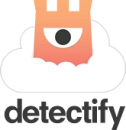If the shift to remote work is going to stick, it’ll be because companies double down on forming human connections in a virtual world. “Doubling down” doesn’t mean simply adding more Zoom happy hours to employees’ calendars, though, as Haley Dean, people business partner at LeanIX, noted.
“Nobody likes ‘forced fun’ and the way people enjoy connecting with one another is different from person to person,” Dean said. “We have to foster, encourage and support connections through different channels and methods to ensure we’re reaching everyone.”
LeanIX implemented Slack integration Donut to recreate the watercooler in a remote world, but it didn’t stop there. The company also redesigned its onboarding program with a heavy focus on forming relationships and creating a feeling of belonging, with new hires spending the first three weeks of the six-week program meeting with people from across the company.
This is only one of many strategies Boston tech companies have implemented to bring their teams behind screens together. Continue reading to learn more about the work Dean and others have done to ensure their people can work remotely without having to sacrifice human connection.

LeanIX helps IT teams better understand and manage all of the software used across their company.
What’s the key to creating real, human connection in the remote workplace?
The key is to keep it as real and authentic as possible. Nobody likes “forced fun” and the way people enjoy connecting with one another is different from person to person. We have to foster, encourage and support connections through different channels and methods to ensure we’re reaching everyone.
We try to keep things fresh by implementing new initiatives and technologies. For example, we recently started using Donut, which randomly facilitates remote coffee chat meetings between extended leadership team members and other employees via Slack. Our enablement team also puts on monthly global networking sessions. The format varies but the goal is always to bring colleagues from across the globe together to find connections inside and outside of the workplace.
The way people enjoy connecting with one another is different from person to person.”
What’s the most successful strategy or initiative you’ve employed for actually facilitating those kinds of connections?
Completely revamping our onboarding program over the last four months, the credit for which goes to our hardworking and dedicated enablement team. Feeling connected begins even before day one, and ensuring new joiners have a successful and thorough pre-boarding and onboarding is crucial to achieving that. All new joiners now complete a six-week onboarding bootcamp, the first half of which is company-specific while the second half is role and team-specific.
The goal of the first half is to ensure new joiners meet and interact with members from all teams and departments within the organization to understand how their roles connect and overlap. Additionally, the onboarding program gives new and existing employees a platform to share and create personal connections with one another. While not everyone has to be friends, making personal connections enhances working relationships and strengthens understanding among colleagues.
What impact has this initiative had on your workforce or culture?
The new onboarding program has been revitalizing for our workforce and culture. It is so easy to get caught up in hiring, bringing people onboard and then moving on to the next hire during periods of rapid growth. Our new onboarding program has allowed us to really step back and narrow our focus on fostering connections and ensuring that new colleagues find the value in the work they’re doing and how it connects to the organization’s mission.
However, our team consistently agrees that there is no better way to connect than face to face. We feel fortunate that we’ve been able to begin safely accommodating more in-person meetings and events while at the same time continuing to strengthen our flexible/remote work model.
Companies use ezCater to order food for meetings, find caterers for special events and to offer one of the tech industry’s favorite perks: free daily lunches.
What’s the key to creating real, human connection in the remote workplace?
It is most helpful to be authentic and vulnerable. I do my best to focus on the little things, like knowing the names of my co-workers’ spouses, children and pets. It is also extremely important to empathize with the “home” aspect of “work from home.” I like to emphasize distractions on calls so everyone knows they’re OK. My own kids and dog appear on Zoom calls daily: Why would I expect anyone else to hide theirs? It’s why we all go to work every day; to provide for our families. Building that human connection requires us to first be humans.
I do my best to focus on the little things, like knowing the names of my co-workers’ spouses, children and pets.”
What’s the most successful strategy or initiative you’ve employed for actually facilitating those kinds of connections?
Deploying talent cards has been great for us. Essentially, “talent cards” are a written document outlining an employee’s professional journey, which is very helpful for structuring and facilitating career path conversations. Leadership initiates meetings with direct reports and skip-level reports once per quarter, with employees encouraged to continue the conversation and own their careers in between quarterly meetings.
I like to ask questions that define success and examine motivation. For some, success is climbing the ladder, while for others it is maintaining a strong work-life balance. Sometimes it’s feeling like an expert in your role. Motivation ranges from children to an upcoming wedding or a trip that’s been postponed multiple times. Regardless of the reasons, focusing on the human connection — the “why” — allows me to foster meaningful relationships and help others grow.
What impact has this initiative had on your workforce or culture?
Thanks to these open, transparent conversations we are able to more readily promote internally. We’re also able to help employees with lateral moves so they can follow career paths they find to be highly motivating.
We’re transparent regarding career paths and expectations, and everyone knows what they are working toward. While not perfect, I strive to put written plans in place for employees to understand exactly what needs to happen for their careers to progress. We maintain regular meetings to review progress and talk through any challenges, and the process is rewarding for all involved.
Drizly is an online ordering platform for wine, spirits and beer, with orders fulfilled by local stores and delivered in less than 60 minutes
What’s the key to creating real, human connection in the remote workplace?
Everyone has different needs and lifestyles and may miss different aspects of being in an office, or they may not miss it at all! Some may miss after-work events, others white-boarding and brainstorming sessions or even simply random encounters in the hallway. The first step is to figure out what kind of interactions are important to you and then invest time in them.
Also, for a lot of people the biggest challenge of remote work is the increase in meetings, with meetings often scheduled back to back. You’re technically interacting with other humans but it’s draining, and it’s important to find ways to carve out time to focus and connect outside of scheduled meetings.
Figure out what kind of interactions are important to you and then invest time in them.”
What’s the most successful strategy or initiative you’ve employed for actually facilitating those kinds of connections?
I don’t take credit for any of this, but I like what Drizly has done to accommodate as many people as possible with a wide variety of activities. We have virtual happy hours, randomized coffee chats through Donut, virtual yoga and fitness classes, mentorship programs and much more. Everything is optional, but opportunities are always available for those who want to participate. We also offer employees a quarterly lifestyle stipend so that they can take care of themselves in their own way.
What impact has this initiative had on your workforce or culture?
Prior to the pandemic, Drizly was almost purely an in-office company with very little remote processes. Now we’re remote-first and folks go into the office only occasionally. I think the important thing is that we have options. We want to meet our employees where they are and the majority have enjoyed the flexibility of working from home, so we make sure to coordinate virtual events and have evolved our benefits package accordingly.
For those who do want to to come to an office, we have physical locations in Denver and Boston and have started hosting team onsites. Two of our core values are “we care” and “we solve,” and how we’ve structured our remote-first environment truly embodies that.

Digital health companies use Zus Health’s suite of software tools — which include medical code sets and datasets — to build new technologies and offer new services.
What’s the key to creating real, human connection in the remote workplace?
The more you try to push virtual interactions the more forced and artificial they can feel. While remote interactions will never replace in-person connections, it is important to realize people still crave social interaction at work. It is equally important to recognize and acknowledge that people have different modes of interacting and to not force one medium over another. Some will choose video chats, Slack or even phone calls. Be open-minded to different ways of connecting. Encourage people to choose methods that make them feel connected to others and the culture you’re trying to cultivate.
The more you try to push virtual interactions the more forced and artificial they can feel.”
What’s the most successful strategy or initiative you’ve employed for actually facilitating those kinds of connections?
A few of our first hires were from outside the Boston area, and we wanted to accommodate them and create an inclusive culture. We were founded at the end of 2020 and knew there were going to be challenges with getting together. At the same time, we believe that collaboration drives innovation. We were building something from nothing and that can be incredibly challenging, and we urged employees to connect with one another.
Early on we created a cadence of getting together once every few months. We understood that not everyone would be comfortable meeting in person, so we created virtual options for attendees. We hosted some of these meetings in our Watertown office and others in places like Portland, Maine, and Salt Lake City, Utah. These team meetings were incredibly powerful for building rapport between employees. It also helped build a culture where people can work from anywhere but still feel connected to the company and mission.
What impact has this initiative had on your workforce or culture?
Our team has appreciated and embraced our remote-first initiative and culture. We definitely rely heavily on tools like Slack and have several channels centered around different hobbies and of course a channel for pets! In addition, we utilize Donut to randomly pair up colleagues to learn about each other’s favorite things and what they’re working on. Our employees have found other creative ways to learn more about each other, too. We started a show-and-tell series, which has stimulated interesting discussions ranging from how to make a cocktail to what it is like to live in the Netherlands.
One of our engineers started a March Madness pool and accompanying Slack channel for the NCAA men’s and women’s basketball tournaments, with 50 percent of the pool fees donated to the United Nations High Commissioner for Refugees. We also held both on-site and virtual lunches for International Women’s Day, purchasing meals from women-owned restaurants and discussing the women who inspire us.

Detectify helps companies protect themselves from cyber threats by working with ethical hackers to expose security vulnerabilities before bad actors find them.
What’s the key to creating real, human connection in the remote workplace?
The key to creating real, human connection in a remote workplace is to realize and facilitate that people are having great in-person interactions, too. That is fundamental to instilling the trust and sense of belonging needed for people to have great virtual relationships. As a leader, encouraging open, candid discussions is essential to ensuring my team can work remotely, and so is actually getting on a video call and chatting.
Encouraging open, candid discussions is essential to ensuring my team can work remotely.”
What’s the most successful strategy or initiative you’ve employed for actually facilitating those kinds of connections?
We have a cultural and competence exchange program where employees from our headquarters in Sweden come over to Boston for about a month to spend time with their U.S. colleagues. Moreover, we make sure our teams meet in person, both for work and fun activities, such as dinners, bowling or going to see a game. At work we have all-hands meetings, weekly one-on-ones and more to ensure we really have the communication needed for people to do a great job.
Brutal honesty can get messy over text, Slack and email. Humans need to see each other’s faces and hear each other’s voices to understand that candidness comes with the best of intentions and is for the good of the team.
What impact has this initiative had on your workforce or culture?
Our hybrid approach along with the cultural exchange initiative has really allowed us to find that sweet spot where you get a chance to build great relationships with the amazing people at this company and enjoy the freedom remote work brings.
Case in point: A few weeks ago the whole U.S. sales team met in Boston to get to know each other better. We held workshops and each day ended with an activity decided by the team. We did all types of fun activities, and as a result our relationships are stronger and we work better together. We definitely plan to continue this initiative and will be heading to Sweden eventually!

BRYTER is the no-code service automation platform that enables business experts to build digital applications.
What’s the key to creating real, human connection in the remote workplace?
I truly believe that human connections start with curiosity about others. It doesn’t need to come from the fact that you stay in the same workspace physically, but that you have a chance to be yourself at work, come in as an authentic person and have a chance to connect both on the work-related topics, but also sharing your passions, daily life and random facts! As a people team, our role is to role model such behaviors: check-in and arrive to the virtual meetings or async tools as people, create spaces of common interests (such as thematic Slack channels) and let them grow organically. Currently, we have people connecting together over passions such as sports, DIY crafts, games, pets or even birdwatching!
Human connections start with curiosity about others.’’
What’s the most successful strategy or initiative you've employed for actually facilitating those kinds of connections?
It all starts with a great onboarding process where our people team gives great hints to the new joiners about how to connect and get to know other people in the company. For instance, a first task is to organize 10 random virtual coffee chats with others, coming from a different team, but maybe sharing a similar hobby? We also have a Notion directory about every employee which they can mention what they like to talk about and how to work with them best. There’s a great balance between keeping things organic, allowing the momentum but also facilitating such connections in the most human way possible.
What impact has this initiative had on your workforce or culture?
The impact of this initiative is huge as it sets a great culture of belonging, whoever you are and whatever your background is. Being curious, caring, and open toward each other creates the necessary trust you need to perform as a team but also to be motivated to arrive to your workplace as you. The culture created by the company, as well as the feeling of belonging is the best example of having created a remote culture that works.
















